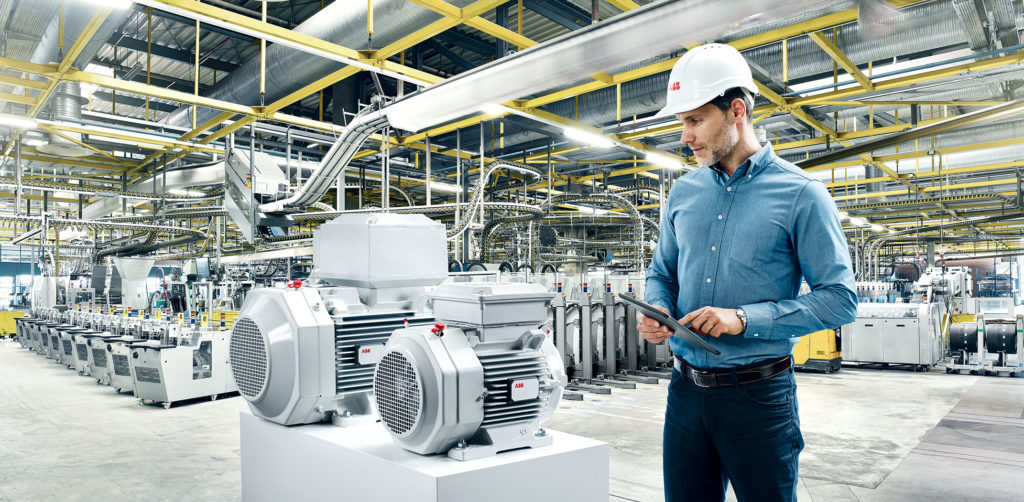Motors that let you know when it’s time for a service
Nearly all of the motor technology that we still use today was invented over a period of seventy years from 1820–1890, with the first commutated DC electric motor invented by British scientist William Sturgeon in 1833. Clearly, production processes — and the resultant demands on equipment — have changed since then and there is a lot that modern businesses can do to keep pace with the latest technology. Here, Simone Wendler, food and beverage segment manager for ABB’s motors and generators business, explains what to expect from a new generation of wireless motor sensor that offers powerful data collection and analytics in a small package.
It is estimated that electric motors account for 45 per cent of global electricity demand. That’s not surprising when you consider that they’re used to drive everything from pumps and fans to compressors in industries as varied as industrial, commercial, agricultural and transport. The problem is that increasingly complex food and beverage segments place a demand on motors to run continuously for long periods of time. This can lead to premature failure of the motor if it is not monitored closely.
In situations like this, carrying out traditional motor condition monitoring is an expensive and time consuming process. For most businesses that use low voltage motors, it’s often cheaper to simply run the motor until it fails and then replace it with another one. The consequence is that plants face unexpected downtime, lost production and possible secondary damage to other equipment. However, this approach can lead to spoilage of perishable food and drink items when the motor fails, forcing factory staff to spend precious time cleaning and preparing equipment to return it to operation.
The rise of the Industrial Internet of Things (IIoT) combined with a greater focus on energy efficiency, means that businesses no longer need to run motors until they fail. Instead, new technology opens up opportunities to make drastic improvement to operations. With IIoT devices, businesses can make use of better big-data analytics and machine-to-machine (M2M) communication to improve energy efficiency and diagnose faults ahead of time. IIoT devices enable enhanced condition monitoring, allowing maintenance engineers to remotely monitor and collect operational trend data to minimize unexpected downtime.
Although this is great for future smart factories, it’s not feasible for plant managers to replace an entire fleet of analog motors today. Although modern, three-phase induction motors are much more efficient, smaller and lighter than motors from 120 years ago, the basic concept has not changed much. This creates a barrier for businesses that want to adopt smart technology but simply don’t have the resources to overhaul entire systems.
To address this problem, ABB has developed the ABB AbilityTM Smart Sensor for low voltage motors. The smart sensor can be retrofitted to many types of existing low voltage motors in minutes. It attaches to the motor frame without wires and uses Bluetooth Low Energy to communicate operational data to a smartphone app, desktop PC or even in encrypted form to the cloud for advanced analytics.
The sensor collects data including: various types of vibration, bearing health, cooling efficiency, airgap eccentricity, rotor winding health, skin temperature, energy consumption, loading, operating hours, number of starts and RPM speed.
The result is that the motor lets the operator know when it’s time for a service. Advanced analytics from the cloud can also provide advice on the status and health of the entire fleet. Data collected by ABB shows that the smart sensor can help users reduce motor downtime by up to 70 per cent, extend the lifetime by as much as 30 per cent and lower energy use by up to 10 per cent, a clear indicator that predictive, rather than reactive, maintenance increases reliability.
So, while we’ve come a long way since the days of William Sturgeon and the first commercial motor, plant managers looking to take the next steps should look closely at smart sensing and condition monitoring to truly embrace the age of IIoT.
For further information contact: Robert Glass, http://new.abb.com/food-beverage
http://new.abb.com



